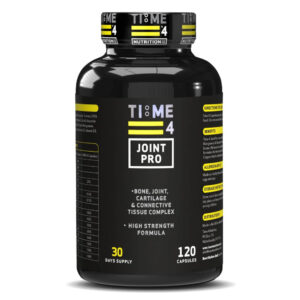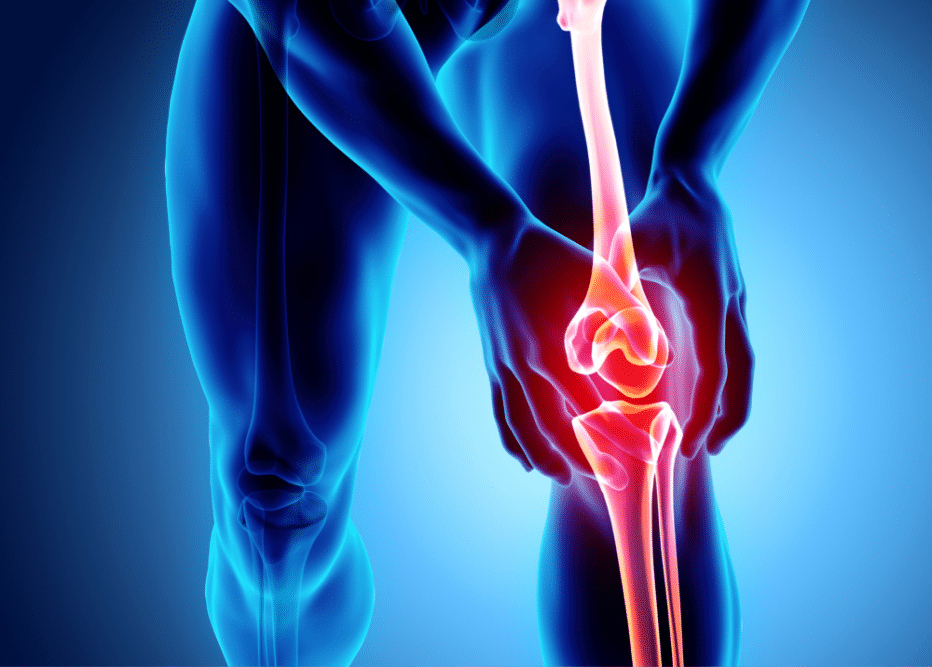What is the Best Joint Protection Supplement?
What is the Best Joint Protection Supplement?
What is the Best Joint Protection Supplement? – Introducing Time 4 Joint pro
(Click on the Reference Numbers in Blue for More Info)
If you look around any gym you are bound to see someone moving their arm and rubbing their shoulder indicating some sort of pain or discomfort after completing a set of bench press. Or perhaps you’ve seen someone running with their knee strapped up or playing a racket sport wearing an elbow brace. This is not to say that exercise is bad for our joints. In fact, it can provide many benefits, such as increased strength and mobility, but over time, the activities of daily living and the knocks and scrapes we pick up through life can lead to ‘wear and tear’ which may result in inflammation, pain, stiffness and, eventually, perhaps even weakness and muscle wasting. Although we can experience joint problems at any age, they tend to become more common with increasing age.
Consequently, joint pain a very common problem, which has many possible causes, but it’s usually due to some form of injury or arthritis. For example, according to NHS figures, approximately 8.5 million people in the UK suffer from osteoarthritis, a degenerative disorder, which causes pain, joint inflammation, and destruction of the articular cartilage.
Typically, we turn to various medications to treat joint pain. These range from over-the-counter pain killers and anti-inflammatories to stronger prescribed medications. While these can play a valuable role in helping to alleviate pain, they are not without problems. For example, non-steroidal anti-inflammatory drugs (NSAIDs), such as ibuprofen, are associated with an increased risk of stomach issues, including bleeding, and kidney and heart problems.
For thousands of years traditional medicine has used various herbs and other natural substances to reduce joint pain and improve function. Many of these have now been the subject of scientific investigation which has highlighted the many benefits they can provide.
Here at Time 4 Nutrition, we pride ourselves on employing the findings of the latest cutting-edge research to produce the most effective and innovative products. In this article, we are going to review some of that research and explain how there’s a lot more to Time 4 Joint Pro than the name suggests.
What’s In Time 4 Joint Pro?
Time 4 Joint Pro contains a specially formulated combination of natural substances that have been shown scientifically to promote joint health. These include:
- Glucosamine HCI
- Chondroitin Sulphate
- Turmeric (95% Curcumin)
- Calcium
- Ginger Root Extract
- Vitamin E
- Vitamin C
- Black Pepper (95% Piperine)
- Zinc
- Manganese
- Copper
- Folic Acid
- Selenium
- Vitamin K
- Vitamin D
- Vitamin B12
As we look at each of these ingredients in-depth, you’ll begin to see why Time 4 Joint Pro is such a great product and how it may benefit you.
What is the Best Joint Protection Supplement? – What Is Glucosamine Hydrochloride (HCI)?
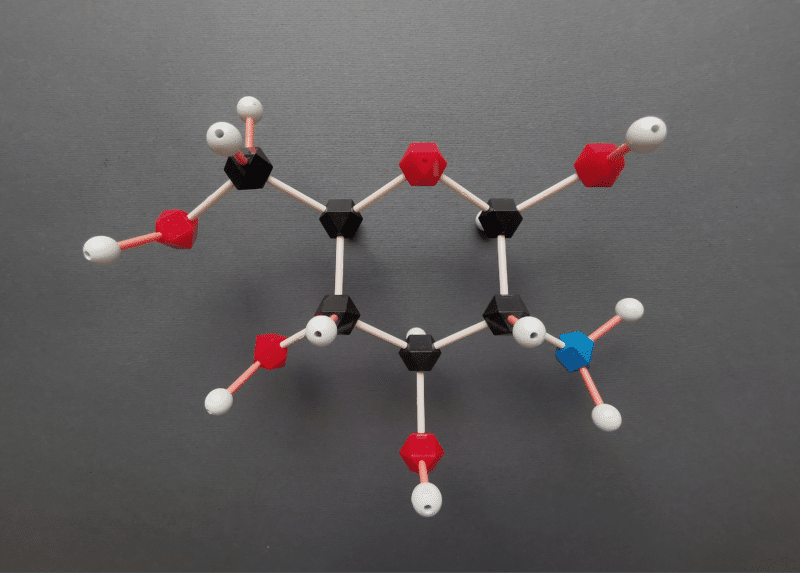
Glucosamine is a substance which occurs naturally in the body and can also be obtained from the shells of shell fish or produced synthetically. It is found in the fluid contained within the major joints and also plays a role in the production of tendons, ligaments and cartilage. It’s use as a supplement for the treatment of various forms of joint pain, including osteoarthritis and rheumatoid arthritis is supported by a number of studies (1, 7, 9, 10, 13).
What Does The Science Say About Glucosamine Hydrochloride And Joint Health?
Glucosamine appears to aid joint health in a several ways. For example, it plays a vital role in the production of hyaluronic acid (1). This a naturally occurring substance found in and around joints, which has been shown to provide a number of benefits including managing inflammation, lubricating and cushioning joint cartilage and preventing its breakdown.
A study by Kanzaki et al., (10) found that glucosamine supplementation reduced pain and improved locomotor function in subjects with knee pain.
There are several types of Glucosamine. The most common are Glucosamine Hydrocholoride (HCI) and Glucosamine Sulphate. HCI is a more concentrated form of Glucosamine than sulphate. It also has less sodium, is more naturally stable and is derived from vegetable sources, making it suitable for vegetarians. Its effectiveness is demonstrated by the results of a study by Bascoul-Colombo (7) which suggest that glucosamine hydrochloride (HCI) prevents cartilage degradation and may also reduce inflammation. The authors suggest that could be part of the mechanisms by which glucosamine is effective in maintaining joint integrity and function, and preventing or delaying early symptoms of osteoarthritis.
What is the Best Joint Protection Supplement? – What Is Chondroitin Sulphate?
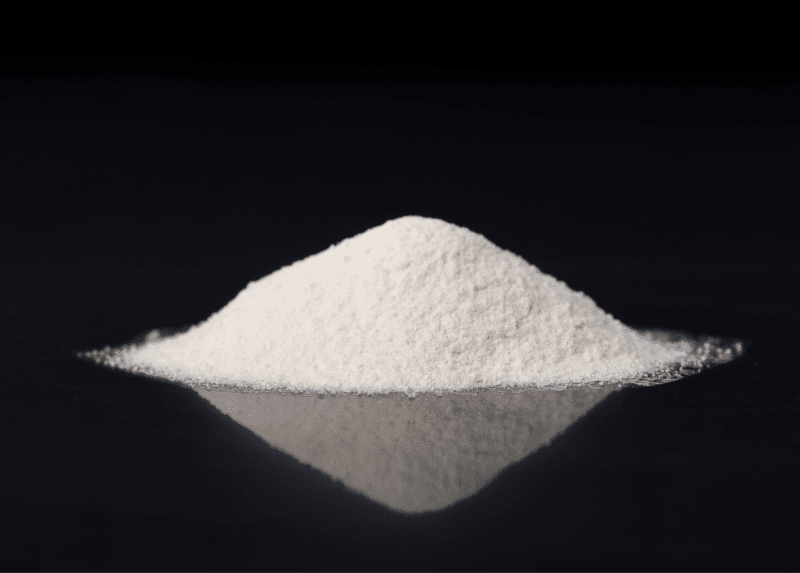
Chondroitin Sulphate is a substance found in the cartilage within joints. It is derived from animal sources, such as shark and cow cartilage, for use in supplements for the treatment of osteoarthritis. It is an important structural component of cartilage and is approved and regulated as a symptomatic slow acting drug for osteoarthritis in Europe and other areas (11).
What Does The Science Say About Chondroitin Sulphate And Joint Health?
Numerous studies have shown the clinical benefits of Chondroitin Sulphate for decreasing pain, improving functional disability, reducing non-steroidal anti-inflammatory drug (NSAID) or acetaminophen consumption, with good tolerability (2, 3, 11).
For example, a study by Reginster (2) compared the effects of Chondroitin Sulphate with celecoxib, a nonsteroidal anti-inflammatory drug (NSAID) used to treat pain and inflammation caused by conditions such as arthritis, and a placebo in the treatment of osteoarthritis. The results of the study showed that Chondroitin Sulphate is superior to a placebo and similar to celecoxib in reducing pain and improving function over 6 months in knee osteoarthritis.
The results of a review by Uebelhart (12) on the use of Chondroitin Sulphate in the treatment of osteoarthritis showed that it was effective and compared favourably with NSAIDs such as diclofenac sodium.
The review also highlighted the good tolerability and safety aspects of oral Chondroitin Sulphate. The author concluded that there was sufficient clinical data to support the view that oral Chondroitin Sulphate is a valuable and safe treatment for osteoarthritis disease, and that there is evidence that oral Chondroitin Sulphate has structure-modifying effects in knee osteoarthritis patients.
A study by Volpi (13) suggests that Chondroitin Sulphate may provide joint protecting benefits by having an anti-inflammatory effect and a protective action through modifying the structure of cartilage.
Combining Glucosamine And Chondroitin Sulphate
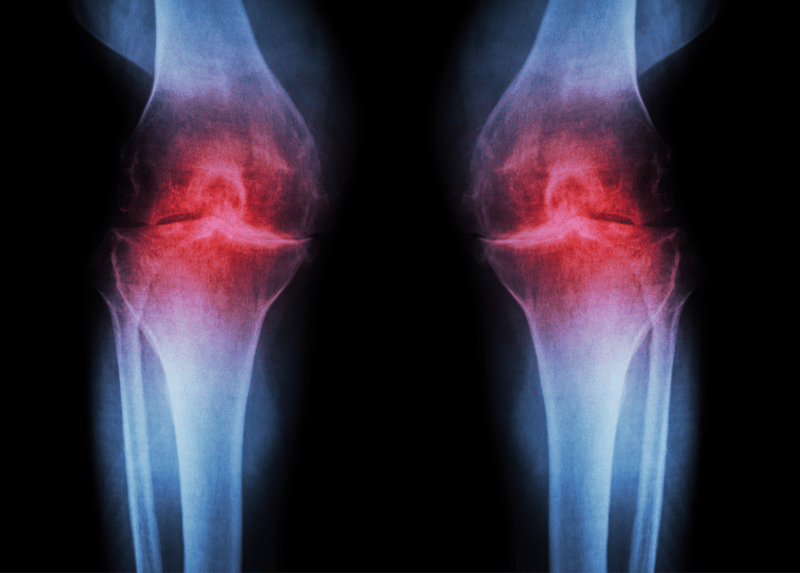
A combination of Glucosamine and Chondroitin sulphate have been shown to reduce joint space narrowing (14). When joints are healthy, they show normal spacing where the bone ends meet. However, narrowing of the joint space may result from overuse of joints, wear and tear wear, and arthritis. Being overweight and having muscle weakness also contributes to joint space narrowing.
Fransen and colleagues (14) investigated the effects of Glucosamine and Chondroitin on reduced joint space narrowing in individuals with knee osteoarthritis. The results of the study showed that the combination of Glucosamine and Chondroitin resulted in a statistically significant reduction in joint space narrowing at 2 years.
What is the Best Joint Protection Supplement? – What Is Turmeric (Curcumin)?
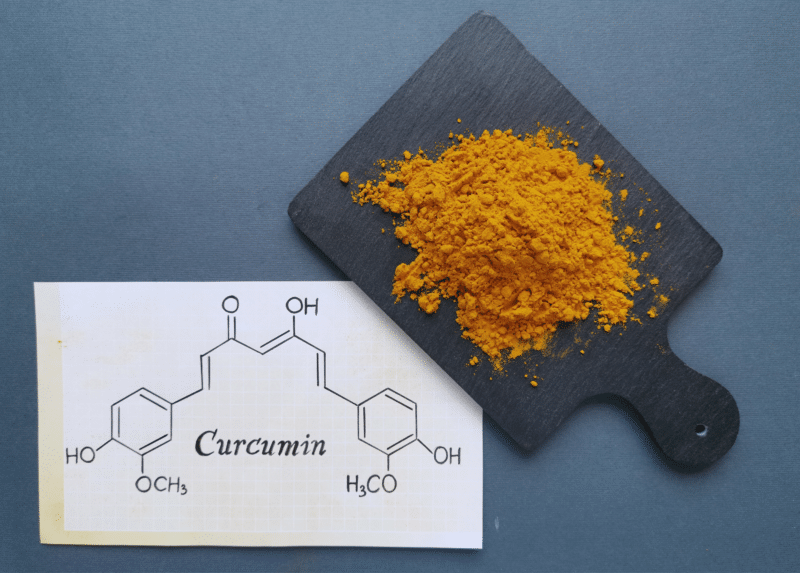
Turmeric is commonly known as a spice and is one of the main ingredients of curry powder. It has long been recognised for its medicinal properties, having been used in traditional Indian medicine for over 4,500 years, and is purported to contains over 200 bioactive compounds working, making it one of the most powerful herbs to support good health. It has now been the subject of a considerable number of scientific studies, as it is the major source of a substance known as Curcumin, a yellow pigment. This is believed to possess powerful anti-inflammatory and antioxidant properties and has been shown to be effective in the management of a variety of conditions ranging from arthritis to anxiety, and has an excellent safety profile. It may also help in the management of exercise-induced inflammation and muscle soreness, thereby enhancing recovery and performance. Additionally, a relatively low dose of the complex can provide health benefits for people that do not have diagnosed health conditions (8).
What Does The Science Say About Turmeric And Joint Health?
There is a considerable body of research to support the use of Turmeric in the treatment of joint pain (8, 15, 16, 17, 18). For example, the results of a review of literature investigating the effectiveness of Curcumin in osteoarthritic patients by Chin (15), showed that patients with osteoarthritis showed improvement in pain, physical function, and quality of life after taking Curcumin. They also reported reduced use of pain killers and side effects during treatment. A number of studies in the review also demonstrated that Curcumin could help to prevent the breakdown of joint cartilage.
One of the criticisms often levelled at research is that the perceived benefits obtained by the study participants may be due to the placebo effect. However, this is not likely to occur in animal studies. Zhang and colleagues (16) investigated the effects of Curcumin on post-traumatic osteoarthritis in mice. The results of the study showed that Curcumin slowed the progression of osteoarthritis and relieved osteoarthritis-associated pain.
Note: Ingesting Curcumin by itself does not lead to the associated health benefits due to its poor bioavailability, which appears to be primarily due to poor absorption, rapid metabolism, and rapid elimination. There are a number of substances that can increase bioavailability. Time 4 Joint Pro contains Piperine for this purpose. This is the major active component of Black Pepper and, when combined with Curcumin, has been shown to increase its bioavailability by 2000% (8).
What is the Best Joint Protection Supplement? – What Is Ginger Root Extract?
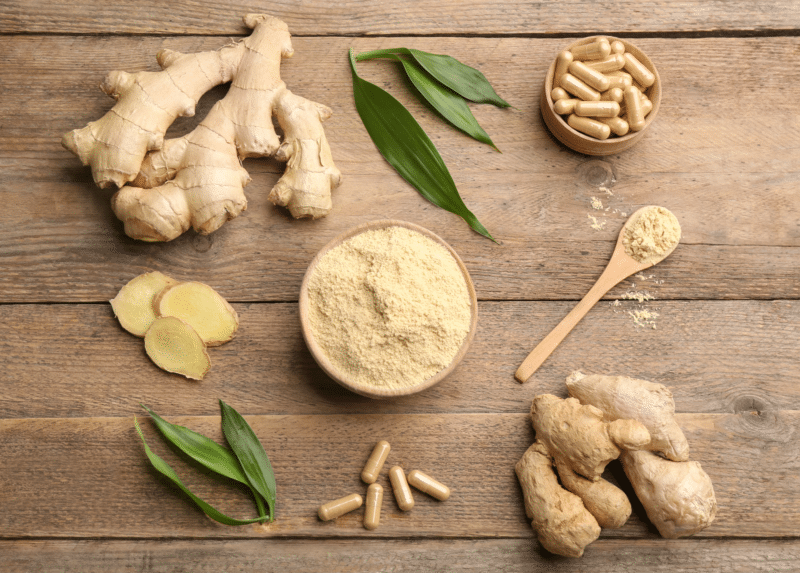
Ginger is a spice which comes from the roots of the ginger plant. It grows in Asia parts of South American, Africa and the Middle East, where it is taken as a medicine and with food.
Ginger is abundant in active constituents, and in recent years, has been found to possess antioxidant, anti-inflammatory and antimicrobial properties.
Ginger is commonly used in the treatment of various conditions including relief from the pain associated rheumatoid arthritis and osteoarthritis.
What Does The Science Say About Ginger Root Extract?
Accumulating studies have demonstrated that Ginger possesses the potential to prevent and manage several diseases, including those effecting the joints.
Bartels and colleagues (3) analysed the results of five trials (593 patients) on the efficacy and safety of Ginger in osteoarthritis patients. The results of the review showed that taking Ginger produced a statistically significant reduction in pain and disability.
A review of clinical trials on the pain lowering effect of ginger by Rondenalli et al., (30) found that oral and topical Ginger can be effective against joint pain caused by osteoarthritis. Interestingly, the review also noted that Ginger can also help to reduce delayed onset muscle soreness (DOMS), such as that caused by exercise.
What is the Best Joint Protection Supplement? – What Is Black Pepper (95% Piperine)?
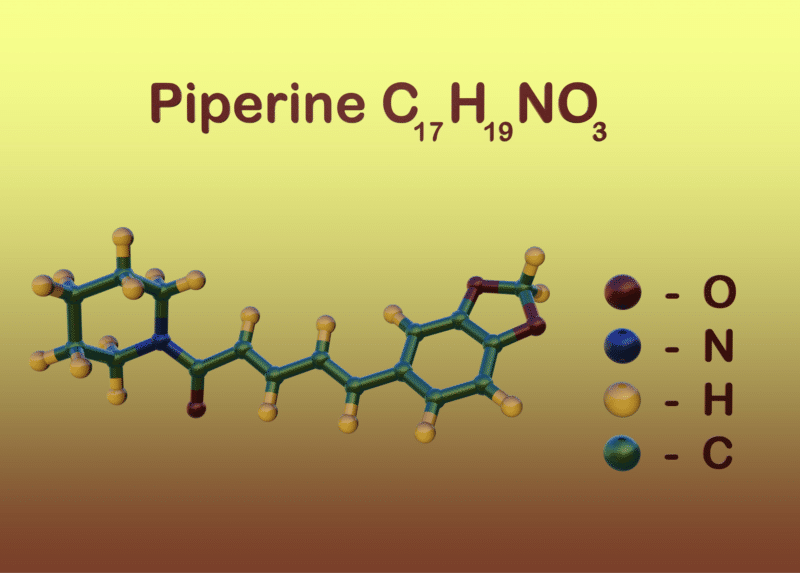
Piperine is a substance derived from Black Pepper. It has been used widely in traditional medicine in India for a variety of conditions, ranging from joint pain and insomnia, to liver problems, lung disease and gangrene. One of its primary uses is to enhance the bioavailability of other compounds allowing them to be more easily absorbed by the body, as we saw in the section on Turmeric.
What Does The Science Say About Piperine?
The results of a study by Bang et al., (31) on the effects of Piperine in rat arthritis models, found that Piperine has anti-inflammatory, pain relieving, and antiarthritic effects. The authors concluded that Piperine should be further studied with regards to use either as a pharmaceutical or as a dietary supplement for the treatment of arthritis.
A review of the medicinal effects of Piperine by Meghwal and Goswami (6) showed that Piperine can aid detoxification, and enhancement of the absorption and bioavailability of herbal and conventional drugs. The review also showed that Piperine has been found to have immune modulating, anti-oxidant, anti-inflammatory, anti-asthmatic and anti-ulcer properties.
Time 4 Joint Pro also contains a range of vitamins and minerals which have been shown to promote join health.
What is the Best Joint Protection Supplement? – What Is Calcium?
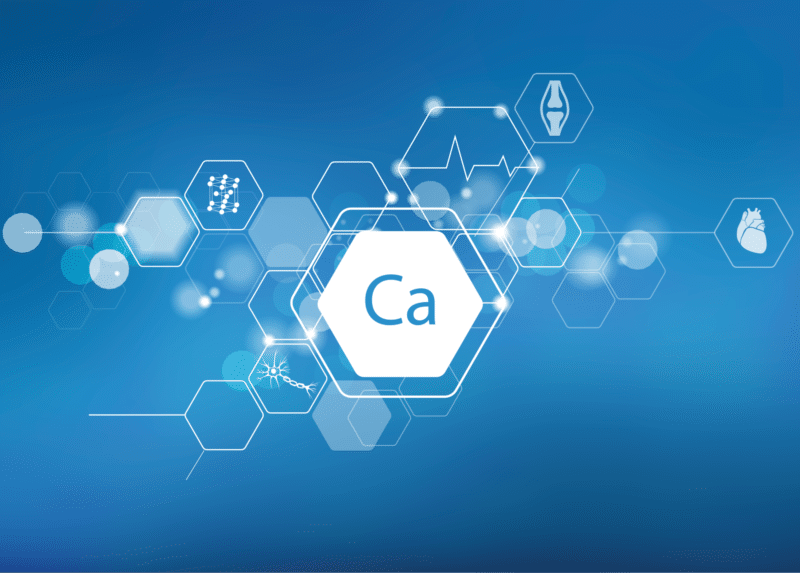
Joints are formed where two or more bones meet. Therefore, for optimal skeletal health we need to have strong, healthy bones. Calcium is essential for this. It is the most abundant mineral in the body and accounts for 1-2 % of adult human body weight. It is a vital component of bones and teeth, where over 99% of our total body Calcium is found.
Calcium also plays a role in many important processes including muscle contraction, blood clotting, energy production, and the function of the nervous and digestive systems. It is commonly used in the treatment and prevention of low Calcium levels and related bone conditions including osteoporosis (weak bones due to low bone density).
What Does The Science Say About Calcium And Joint Health?
A review by Cashman (19) highlighted the importance of Calcium when noting that chronic Calcium deficiency resulting from inadequate intake or poor intestinal absorption is one of several important causes of reduced bone mass and osteoporosis. Therefore, it is vital that adequate dietary Calcium is consumed at all stages of life – in early life so that the genetically programmed peak bone mass can be reached and in later adulthood so that the skeletal mass can be maintained and age-related bone loss minimised.
Unfortunately, there is evidence that many individuals are not consuming the recommended levels of Calcium in their diet. Furthermore, it is not only the amount of Calcium in the diet but also its absorption by the body which determines the availability of Calcium for bone development and maintenance.
To help address this, Time 4 Joint Pro contains Vitamin D and Vitamin K, as they play a valuable role in helping to ensure that we absorb sufficient levels of Calcium and that it is directed to where it is needed in the body.
What is the Best Joint Protection Supplement? – What Is Vitamin D?
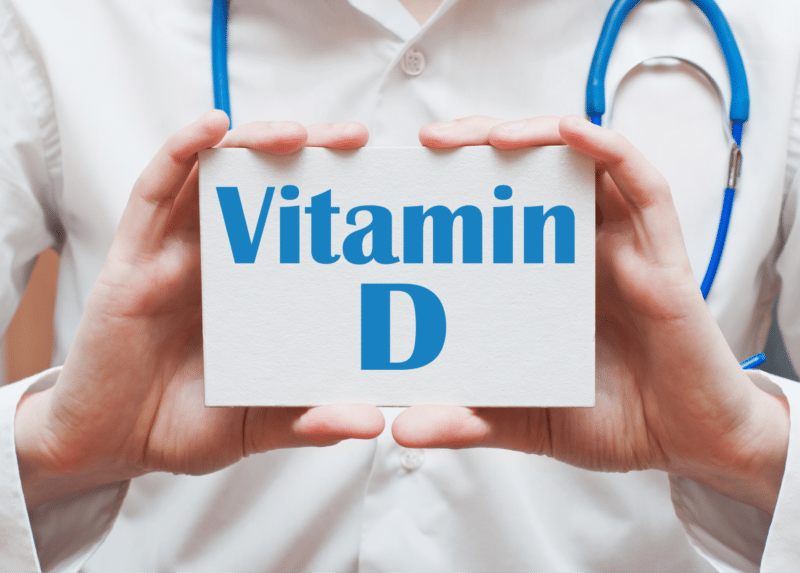
Vitamin D is a fat-soluble vitamin essential for the regulation of calcium and phosphorus within the body, and plays an important role in maintaining the structure of bone, cartilage and teeth and normal immune and muscle function. It is used to treat many conditions including osteomalacia (softening of the bones) and osteoporosis (weak bones).
What Does The Science Say About Vitamin D And Joint Health?
Although we can obtain Vitamin D from various foods, such as eggs and oily fish, and our bodies can produce it from sunlight, approximately half the UK population suffer from Vitamin D deficiency during certain times of the year, which has implications for our bone and joint health.
For example, a study by Laslett et al., (20) found that moderate Vitamin D deficiency independently predicts the incidents, or worsening of, knee and hip pain. Therefore, the authors suggest that correcting Vitamin D deficiency may attenuate worsening of these conditions.
This suggestion seems to be supported by the findings of Gao and colleagues (21), who analysed a number of studies involving 1136 patients relating to the use of Vitamin D supplementation on osteoarthritis of the knee. The results showed that Vitamin D can be effective in improving pain and function in these patients.
What is the Best Joint Protection Supplement? – What Is Vitamin K?
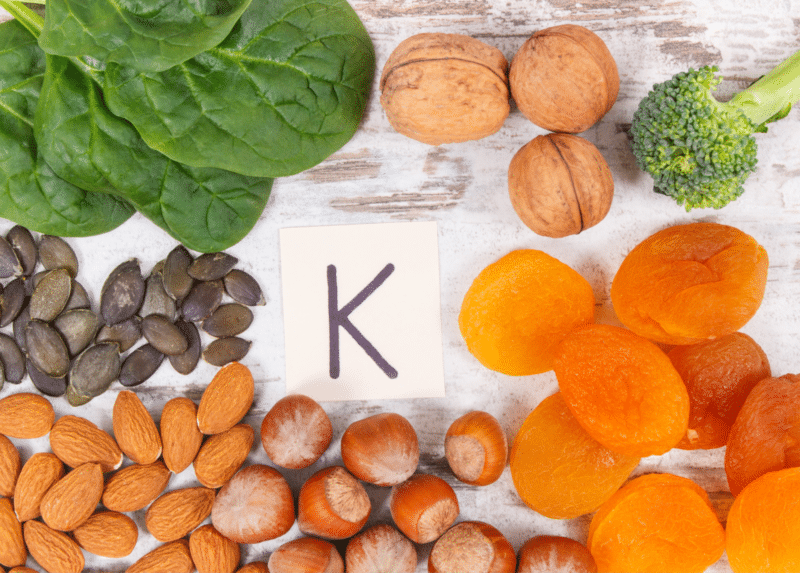
The term ‘Vitamin K’ refers to a group of fat-soluble vitamins that play a role in the maintenance of healthy bone and cartilage, and the regulation of blood calcium levels. It has many medicinal uses including the treatment of osteoporosis.
What Does The Science Say About Vitamin K And Joint Health?
Various studies have highlighted the link between low Vitamin K levels, joint pain and cartilage degeneration (22, 23, 24, 25, 26). Specifically, it has been shown that Vitamin K deficiency produces abnormal growth plate calcification and inappropriate mineralisation of cartilage leading to osteoarthritis (26). On the other hand, the current literature generally agrees that a sufficient level of Vitamin K is associated with a lower risk of osteoarthritis and pathological joint features (24).
Consequently, these findings have led to a number of authorities to recommend that we ensure a sufficient intake of Vitamin K to protect our joints (24, 25).
How Calcium, Vitamin D And Vitamin K Work Together
Both Vitamin D and Vitamin K play an essential role in Calcium metabolism. One of Vitamin D’s primary functions is to promote Calcium absorption and maintain adequate levels in the blood. However, it does not precisely govern where Calcium is deposited in the body. Therefore, to maximise the benefits of Vitamin D supplementation while minimising the potential risk of toxicity, it is recommended that Vitamin K supplements should also be taken. This is because Vitamin K activates a protein that helps to direct Calcium to the areas it is most needed (i.e., bone) and prevents it from accumulating in the soft tissues, such as the kidneys and blood vessels, where it can have a detrimental effect.
What is the Best Joint Protection Supplement? – What Is Vitamin C?
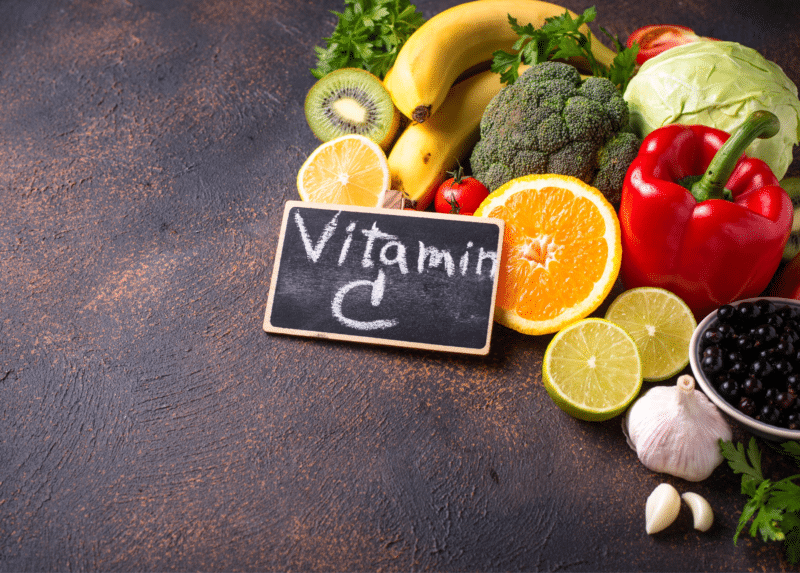
Vitamin C, or ascorbic acid, is a water-soluble vitamin commonly found in a variety of fruit and vegetables. It is essential for the maintenance of healthy skin, cartilage, teeth, bone, and blood vessels. It is also an antioxidant, helping to protect the cells of the body from free radical damage. Humans do not have the ability to synthesise Vitamin C, so we must obtain it from our diet.
There are two major mechanisms by which Vitamin C can contribute towards good joint health. These are its antioxidant properties and its essential role in collagen production. This is the main structural protein found in the connective tissues of the body which make up our joints, i.e., cartilage, bones, tendons and ligaments.
What Does The Science Say About Vitamin C And Joint Health?
A study by Boyera (27) and colleagues evaluated the effects of Vitamin C on collagen production and ability to form chemical bonds. It was shown that Vitamin C induced a dose-dependent increase in collagen type I deposits, the type of collagen found in bone and tendons.
Ripani et al., (28) investigated the effectiveness of the addition of Vitamin C in nutriceutical drugs for the treatment of arthritis of the knee in young adults. The results showed that those individuals receiving the additional Vitamin C reported a better quality of life and a reduced use of pain killers.
A review by Chin and Ima-Nirwana (29) assessed the current evidence of the bone-sparing effects of Vitamin C derived in cell, animal and human studies. The authors concluded that Vitamin C supplementation was able to prevent bone loss in several animal models. Human studies generally showed a positive relationship between Vitamin C and bone health, indicated by improved bone mineral density, fracture probability and bone turnover markers.
What is the Best Joint Protection Supplement? – What Is Vitamin E?
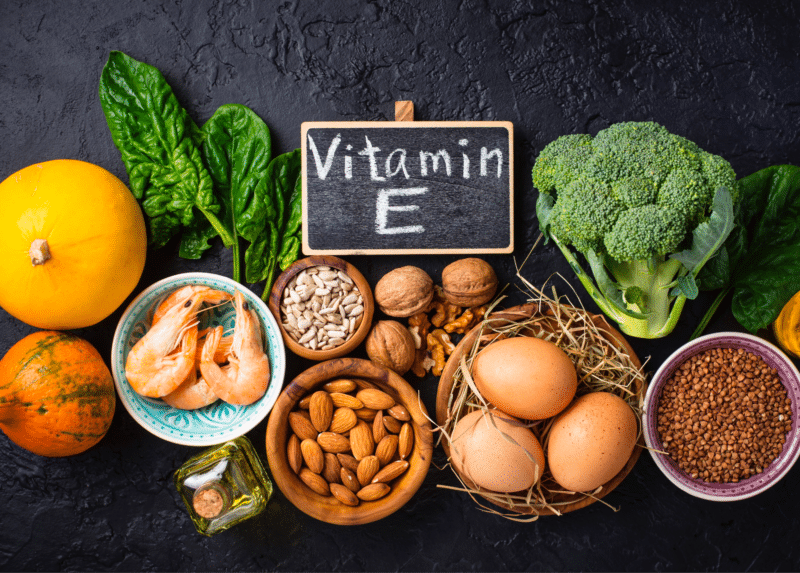
Vitamin E is a fat-soluble vitamin found in many foods including vegetable oils, cereals, meat, poultry, eggs, fruits, nuts and vegetables. It acts as an antioxidant, helping to protect the body from free radicals. Vitamin E supports the immune system, aids the production of red blood cells, and helps to maintain healthy skin and eyes. It can also help to prevent and treat osteoarthritis due to its antioxidant and anti-inflammatory properties.
What Does The Science Say About Vitamin E And Joint Health?
Chin and Ima-Nirwana (5) conducted a review of the current literature on the relationship between Vitamin E and osteoarthritis. The results showed that Vitamin E treatment prevented cartilage degeneration and improved oxidative status in animal models of osteoarthritis. Low circulating or synovial Vitamin E was observed in human osteoarthritic patients compared to healthy controls. The authors concluded that Vitamin E may retard the progression of osteoarthritis by reducing oxidative stress and inflammation of the joint.
A study by Zheng et al., (26) on the role of fat-soluble vitamins in osteoarthritis management, found that Vitamin E enhances the growth of cartilage producing cells and exhibits anti-inflammatory activity, as well as playing an important role in the prevention of cartilage degeneration.
What is the Best Joint Protection Supplement? – What Is Zinc?

Zinc is a mineral that plays an important role in bone and joint health, cell growth and division, energy production, immune function, DNA and protein synthesis, cognition, fertility and reproduction, the maintenance of normal testosterone levels, bones, hair, nails and vision, and Vitamin A metabolism. It also contributes to growth and tissue repair, and the protection of cells from oxidative stress. It is required for the function of 300 enzymes. Zinc supplements are used in the treatment of various conditions including osteoporosis and rheumatoid arthritis.
What Does The Science Say About Zinc and Joint Health?
A study by Kwon and colleagues (32) demonstrated that a combination of a probiotic complex, rosavin, and Zinc improved pain levels by preventing cartilage damage in an osteoarthritis rat model.
Seo et al., (33) investigated the effects of Zinc on bone cell production. The results of the study showed that Zinc can increase the formation of bone by stimulating cell proliferation and collagen synthesis in bone building cells.
What is the Best Joint Protection Supplement? – What Is Manganese?

Manganese is a mineral that plays an important role in energy metabolism, the reduction of inflammation and oxidative stress, regulation of blood sugar, and thyroid function. It is essential for bone health, including bone development and maintenance. When combined with the nutrients, Calcium, Zinc and Copper, Manganese supports bone mineral density. It is used in the treatment of a number of conditions including osteoporosis and osteoarthritis.
What Does The Science Say About Manganese And Joint Health?
A clinical trial by Das and Hammad (34) found the combination of Glucosamine HCl, Chondroitin Sulfate and Manganese to be effective for the treatment of mild to moderate osteoarthritis of the knee. A study by Leffler et al., (35) also found this combination to be effective in the treatment of osteoarthritis.
The results of a review by Saltman and Strauss (36) showed that manganese, along with Copper, and Zinc, is essential for bone metabolism. The results further demonstrated the effectiveness of Calcium, Copper, Manganese and Zinc supplementation on spinal bone mineral density in postmenopausal women and the necessity of trace elements for optimal bone matrix development and the maintenance of bone density.
What is the Best Joint Protection Supplement? – What Is Copper?

Copper is the third most abundant dietary trace metal after Iron and Zinc. It plays an important role in a number of functions including the development and maintenance of bone and connective tissue, the production of blood cells, regulation of heart rate and blood pressure, and absorption of Iron. It also contributes to the function of the immune and nervous systems, energy production, iron transport in the body and the protection of cells from oxidative stress. It is used in the treatment of various conditions including osteoarthritis and osteoporosis.
What Does The Science Say About Copper And Joint Health?
The results of the review by Saltman and Strauss (36), discussed in the previous section on manganese, show that Copper, along with Manganese and Zinc, is essential for bone metabolism. The results further demonstrated the effectiveness of Calcium, Copper, Manganese and Zinc supplementation on spinal bone mineral density in postmenopausal women and the necessity of trace elements for optimal bone matrix development and the maintenance of bone density.
The findings of a study by Munthe et al., (37) suggest that Copper may help to combat rheumatoid arthritis by helping to reduce inflammation and by helping to nullify the potentially harmful activity of certain types of white blood cell.
Despite the importance of Copper being recognised for a nearly a century, a study by Klevay (38) highlighted the fact that it has been decreasing in the Western diet at least since the 1930s, with half of the adult population consuming less than the amount recommended in the European Communities and the United Kingdom. The author noted that people deficient in Copper are being identified increasingly and that almost 1000 people have benefited from supplements containing Copper in controlled trials. Klevay further suggested that osteoporosis, Alzheimer’s disease and heart disease, are the most likely illnesses caused by low Copper intakes.
What is the Best Joint Protection Supplement? – What Is Folic Acid?
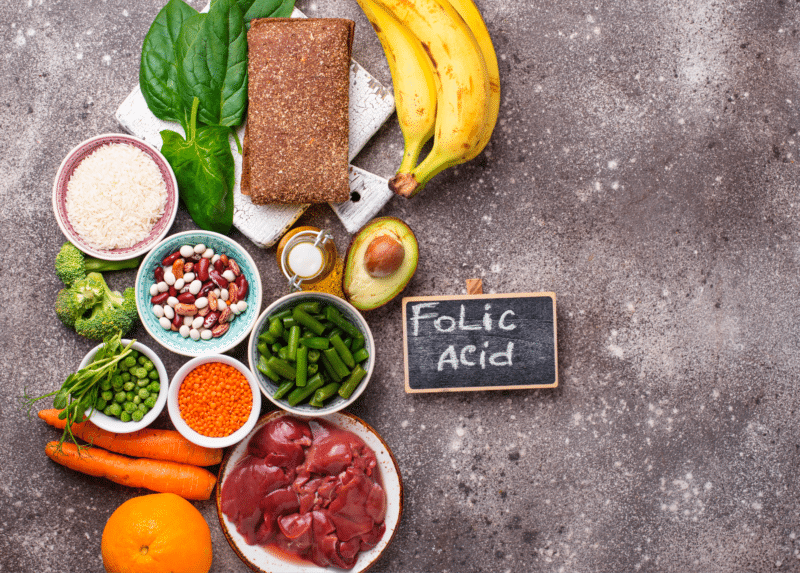
Folate and Folic Acid are forms of a water-soluble B Vitamin. Folate occurs naturally in food, and Folic Acid is the synthetic form of this vitamin. Folic Acid is used for prevention of birth defects and in the treatment of a various conditions including nerve and muscle pain. It functions together with Vitamin B12 to form healthy red blood cells and plays a role in normal cell division and growth, the structure of the nervous system, the function of the immune system and maintenance of normal blood homocysteine levels. Homocysteine is a naturally occurring amino acid found in blood plasma, high levels of which are believed to increase the risk of osteoporosis, cardiovascular disease and Alzheimer’s. Folic Acid also contributes to amino acid synthesis, psychological function and a reduction in tiredness and fatigue.
What Does The Science Say About Folic Acid And Joint Health?
A study by Salari and colleagues (39) found that Folic Acid supplementation had a positive effect on the rate of bone metabolism in osteoporotic women.
Shu et al., (40) investigated the effects of serum homocysteine levels and their association with clinical characteristics of inflammatory arthritis. The results of the study found that the serum homocysteine level was much higher in rheumatoid arthritis (RA) patients who received methotrexate therapy, a drug used to treat rheumatoid arthritis, without folic acid supplementation than in those who received methotrexate with Folic Acid supplementation. The authors concluded that patients with high levels of homocysteine might benefit from earlier supplementation with Folic Acid.
What is the Best Joint Protection Supplement? – What Is Selenium?

Selenium is an essential mineral that plays an important in soft tissue and connective tissue repair in the body,metabolism, thyroid and reproductive function and the immune system. It is also a component of some of the important antioxidant enzymes (e.g., glutathione peroxidase), which help to protect the body against oxidative stress. Selenium supplements are used in the treatment of a wide variety of conditions, including osteoarthritis and rheumatoid arthritis.
What Does The Science Say About Selenium And Joint Health?
A study by Kang and colleagues (41) highlighted the contribution of Selenium deficiency to various diseases including osteoarthritis and noted that oxidative stress serves as a major cause of the initiation of osteoarthritis. The authors also noted selenium deficiency is associated with biochemical impairments that can result in cartilage damage.
A review of the literature investigating Selenium and autoimmune diseases, including rheumatoid arthritis, by Sahebari et al., (42) found that a decrease in the blood levels of Selenium was noted in patients with autoimmune diseases, which may be a risk factor for inflammation and initiation of autoimmunity in these patients. A sufficient quantity of Selenium has been shown to contribute to the management of complications of autoimmune diseases, which may be due to the anti-inflammatory effects of Selenium. The authors concluded that Selenium should be considered in potential nutrition interventions and have beneficial effects on some autoimmune diseases.
Low Selenium levels are not only implicated in the development of arthritis but also osteoporosis. The results of a study by Wang et la., (43) found that middle-aged and older individuals with lower levels of dietary Selenium intake have a higher prevalence of osteoporosis.
What is the Best Joint Protection Supplement? – What Is Vitamin B12 (Cyanocobalamin)?

Vitamin B12 is a water-soluble vitamin, which plays an important role in bone health and is used in the treatment of osteoporosis and may also help in the treatment of rheumatoid arthritis. It is also required for the normal function of the nervous and immune systems, energy production, the formation of red blood cells, the metabolism of folate, DNA synthesis, and fatty acid and amino acid metabolism. Together with Folate and Vitamin B6, Vitamin B12 is required for maintenance of normal blood homocysteine levels.
What Does The Science Say About Vitamin B12 And Joint Health?
A study by Tucker et al., (44) found that low plasma Vitamin B12 is associated with lower bone density, which increases the risk of osteoporosis and fracture. Both men and women with low Vitamin B12 concentrations had lower average bone density than those with higher Vitamin B12 levels. These differences were significant for men at the hip and for women at the spine. The authors noted that Vitamin B12 has been linked to the activity of bone building cells in clinical studies.
Swart et al., (45) investigated the relationship between Vitamin B12, Folic Acid, and bone. Vitamin B12 and Folic Acid deficiency are associated with a higher serum concentration of homocysteine, which is a risk factor for fractures. Therefore, the authors suggest that Vitamin B12 and Folate may contribute to a decrease in the incidence of fractures.
Buesing et al., (46) reviewed the latest information on Vitamin B12 for the treatment of pain conditions. The authors concluded that studies support multiple beneficial effects of Vitamin B12 including the regeneration of nerves and the inhibition of pain signalling pathways. Animal studies demonstrate synergistic benefits of Vitamin B12 combined with other pain medications, including nonsteroidal anti-inflammatory drugs and opiates. While clinical trials provide evidence for the effectiveness of Vitamin B12 for the treatment of low back pain and pain due to nerve damage.
What is the Best Joint Protection Supplement? – Summary
In summary, the ingredients in Time 4 Joint Pro have been shown to improve joint function, protect cartilage and reduce pain, inflammation, and the risk of osteoarthritis and osteoporosis.
Despite these many benefits, you may be thinking do I really need Time 4 Joint Pro if these ingredients are available in food?
It is important to understand that although these ingredients are derived from natural sources, they tend to be present in much lower concentrations. For example, Curcumin is found at a concentration of just 3% in food sources while in extracts it occurs at 95%. Similarly, Piperine is present at more than 10 times the amount in supplement form. As we have already seen, even if an active ingredient is present in sufficient quantities, poor bioavailability limits the benefits you can obtain. Hence, other substances are needed to increase bioavailability and allow you to optimise the potential health benefits available to you.
